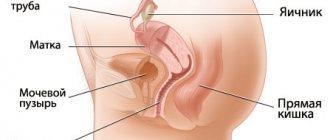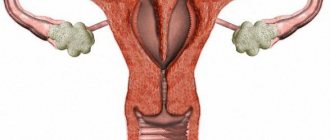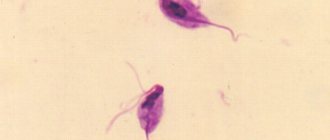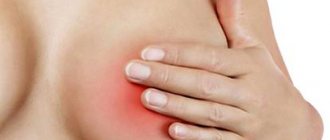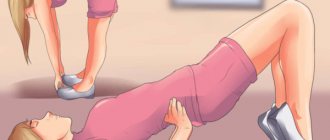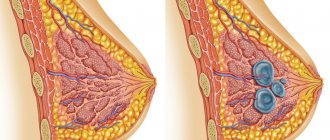What is Trichomonas colpitis in women? Trichomonas colpitis is an inflammatory disease, which is currently quite common among women, despite all preventive measures taken.
In women, all symptoms manifest themselves more clearly, so pathology can be identified much faster than in men. In the case when both partners are infected, the man’s symptoms are blurred, so the diagnosis of urethritis can only be confirmed after laboratory tests.
When infected, a man acts as a carrier. During normal sexual intercourse, Trichomonas, which are a special type of pathological microorganisms, enter a woman’s body.
How is Trichomonas colpitis transmitted?
The disease is caused by Trichomonas vaginalis. These are single-celled organisms that can only exist in the human body. When exposed to the environment, they quickly die, even under normal room conditions. The following factors are especially detrimental to them:
- high temperatures (over 45);
- direct sunlight;
- change in osmotic pressure;
- When they come into contact with household items, they quickly dry out and die.
Based on this, the main route of transmission of infection is sexual, in unprotected intimate relationships.
Moreover, the entry of trichomonas onto the mucous membranes of the oral cavity and into the stomach also causes their instant death. Therefore, these single-celled organisms parasitize only in the genital and urinary organs.
They can be found in the following places:
- in the vagina and cervical canal in women most often;
- they can also penetrate into the uterine cavity and appendages, sometimes causing the appearance of abscesses and tubo-ovarian formations;
- in the urethra, bladder, and less often in other parts of the urinary tract.
Theoretically, a household contact route is also possible, for example, infection through towels, in a bathhouse, or through other hygiene products. But in practice you don’t have to deal with this.
We recommend reading the article about colpitis during menstruation. From it you will learn about the causes of the disease and its effect on the menstrual cycle, changes in the nature of menstruation and treatment features.
And here is more information about the treatment of subacute vaginitis.
Prevention
Most doctors emphasize that infection with Trichomonas can be completely avoided if:
- Always use condoms when having sex with an untested partner.
- Avoid casual sexual relationships.
- Adhere to basic rules of personal hygiene.
Doctors also recommend that women regularly visit a gynecologist (twice a year), lead a generally healthy lifestyle and avoid hypothermia. These are important rules for maintaining the health of the reproductive organs.
Factors contributing to the development of trichomoniasis
Often, trichomoniasis can occur in subclinical forms, causing virtually no complaints. In this case, the following circumstances may contribute to the manifestation of the disease:
- Decreased immunity due to stress, hypothermia, physical activity, etc.
- During the period after infectious diseases, exacerbation of chronic pathology.
- Alcohol (and even beer), spicy, salty, pickled, can also slightly increase the symptoms of diseases.
- Taking hormonal medications, in particular glucocorticosteroids, as well as certain medications, for example, for chemotherapy.
Complications
In the absence of timely seeking medical help and adequate treatment, trichomoniasis can lead to extremely unpleasant complications. This disease can cause:
- Bartholinitis (inflammatory process in a large gland localized in the vestibule of the vagina)
- Inflammation of the uterus.
- Inflammatory process in the ovaries and fallopian tubes.
- Cystitis and pyelonephritis.
- Disturbances in the activity of the reproductive system (infertility).
- Pathologies of the fetus and premature labor (during pregnancy), etc.
A timely visit to the doctor if any alarming symptoms occur in the activity of the genitourinary system and comprehensive treatment of trichomoniasis reduces the risk of unpleasant complications several times.
Symptoms of Trichomonas colpitis
From the moment of infection until the first symptoms of the disease appear, it takes from several hours to a couple of days and even weeks. The main complaints are as follows:
- Copious vaginal discharge with an unpleasant odor. They can be white or transparent, as well as greenish, yellowish, swampy and others. It all depends on whether there is a concomitant infection. Blood may also be present, especially if there is erosion. It is believed that the discharge is always foamy, since trichomonas emit carbon dioxide during their life processes. But this can only be noticed during a gynecological examination, and not always.
- Burning, itching in the area of the external genitalia, which may be unusually red and swollen.
- Frequent relapses of thrush, the appearance of condylomas - all this is evidence of immunodeficiency due to infection.
- The woman also notes periodic nagging pain in the lower abdomen, which can intensify during sexual intercourse.
- If your body temperature rises, it means that the inflammation has spread beyond the vagina. There is a possibility of dissemination of the infection and the development of abscesses, pyosalpings, even peritonitis.
- Inflammation of the urinary system. Most often these are cystitis and urethritis, including recurrent ones.
Nature of the disease
Trichomonas form of colpitis occurs due to the pathological action of pathogenic bacteria. Urogenital trichomonas are a conditionally pathogenic microflora. Under the influence of various negative factors, rapid proliferation of bacteria or the death of part of the beneficial microflora occurs. Trichomonas occupies the vacant area and begins to actively reproduce. Under its influence, rapid death of tissue cells and accumulation of decay products occurs.
These substances cause severe tissue inflammation. Over time, bacteria quickly spread throughout the urinary system. There is a gradual development of concomitant diseases of the genitourinary system. One of the serious complications is bacterial prostatitis. In 65% of patients, colpitis is accompanied by inflammation of the prostate gland. This complication can cause impotence and further infertility.
Colpitis is caused not only by Trichomonas. When studying a smear from the urethra, streptococci, staphylococci and other pathogens are often cultured. It is due to this feature that self-medication is prohibited. A person cannot determine the microbe that affected the pathological process in the urethral canal. This can only be determined in laboratory conditions.
The disease has several forms. There are acute and chronic colpitis. Acute colpitis is accompanied by the appearance of symptoms in the first days of infection. The patient experiences profuse, unpleasant discharge, which is accompanied by an increase in body temperature. With chronic colpitis, a man does not have a clear clinical picture. Symptoms are sluggish, sometimes they are completely absent.
Consequences of untreated colpitis
Trichomonas colpitis is insidious. This is due to the following factors:
- Trichomonas can be recognized by the body as its own cells. In this case, it does not respond to them with the proper inflammatory process, which allows the infection to remain undetected for a long time.
- Trichomonas have an amazing property - they can “swallow” other pathogens and maintain their activity for a long time. Most often, chlamydia, myco- and ureaplasma, and some others are “hidden” in this way. As a result, during treatment, pathogens are incompletely eradicated, or they become resistant to drugs (antibiotics). So the process gradually becomes chronic.
Thus, it is important not only to treat Trichomonas colpitis in a timely manner, but also to be examined in parallel for other infections. But it is better to prevent infection with reliable means of protection during sexual intercourse.
Trichomonas colpitis can lead to the following complications:
- Pathology of the cervix (erosion, polyps, etc.). Trichomonas play a significant role in the development of dysplasia.
- Inflammation of the endometrium with all the ensuing consequences (hyperplasia, polyps, etc.), pyosalpings, pyovariums. Episodes of Trichomonas pelvioperitonitis occur regularly.
- Problems with pregnancy - from the inability to conceive to fading at different stages, premature birth, intrauterine infection, etc.
Watch the video about trichomonas colpitis:
Causes
How is Trichomonas colpitis transmitted? According to doctors, the likelihood of infection through personal belongings is minimal, although it cannot be completely ruled out. So the main route of transmission is considered to be sexual. The main cause of Trichomonas colpitis is called unprotected sex with a partner who is already infected.
In addition, there are a number of factors that create conditions for the growth and reproduction of a colony of microbes. These factors include conditions that lead to a decrease in the level of immunity.
For example, the following can shorten the incubation period and increase the inflammatory process:
- hypothermia of the body;
- frequent stress;
- Unhealthy Lifestyle;
- passion for hormonal drugs.
Immunity may decrease as a result of chemotherapy. Problems with hormone synthesis can provoke the rapid development of Trichomonas colpitis. Women who frequently change their partners automatically fall into the high-risk group for this disease. According to doctors, the risk of infection increases fourfold. With weak immunity, the first signs of the disease will appear within three days after infection.
Diagnosis of trichomoniasis
You can suspect the presence of Trichomonas colpitis based on complaints and gynecological examination. But the following methods are used for confirmation:
- A regular smear on the flora from the posterior vagina. It is ideal if the doctor takes the material and looks at it right away, even without staining. Trichomonas are mobile, so their activity can be easily seen under a microscope. More often, the material is simply applied to a glass slide and then sent to the laboratory.
- An oncocytology smear also detects pathogens if they are present in the cervical canal.
- The most reliable method for determining Trichomonas is PCR. At the same time, you can be examined for other sexually transmitted infections with one sample.
- The cultural method (inoculation on a medium) is practically not used, as it is superseded by the price range, ease of execution and effectiveness of PCR.
Treatment of trichomonas colpitis
Despite the fact that trichomoniasis is one of the most common infections, the range of drugs for treatment is not very wide.
Since this pathology very often occurs together with other STIs, it is highly advisable to conduct a full examination before starting therapy; only one sexual partner is possible.
The basics of therapy are as follows:
- It is mandatory to take tablets orally, i.e. systemic effect on the body;
- it is advisable to combine with suppositories, vaginal capsules, etc.;
- treatment of other sexually transmitted infections is carried out in parallel;
- results must be monitored by both sexual partners, and not earlier than 2 - 3 weeks from the end of therapy. Women should get tested on the eve of menstruation, since at this time immunity decreases, and if the infection is not completely cured, it will somehow manifest itself at this time.
It is very easy to get trichomoniasis, but it is not always possible to get rid of these microorganisms the first time. Often the infection becomes subclinical. At the same time, Trichomonas seem to stop their vital activity, and it seems that a complete cure has occurred. But with provoking factors, the symptoms of the disease reappear.
Drug therapy
The most effective are the following groups of drugs:
| Drugs | Application |
| Metronidazole and its analogues (Trichopol, Klion-D, Metrogyl, Metron, Flagyl and others) | There are various forms of release - suppositories, vaginal and oral tablets and capsules, cream, etc. The dosage also differs - from 100 mg to 250 and 500. Intravenous drip administration is used only in the treatment of generalized forms, for example, Trichomonas pelvioperitonitis, etc. Approximate regimen: 0.5 g of metronidazole twice a day plus 0.5 g of the drug vaginally. If this is a treatment for a man, the entire dose is for internal use. The duration of treatment is 10 - 14 days. |
| Tinidazole (Fasigil and others) | It is also highly sensitive to these pathogens and is available in the form of 500 mg tablets. Its advantages over metronidazole are shorter treatment regimens. For example, you can drink 2 g of the drug once and that’s it. |
| Clindamycin is an antibiotic with antiprotozoal activity. | Most often used in combination with metronidazole. Included in the preparations Dalacin, Clindacin, Zerkalin and others. There are both tablets for oral administration, vaginal cream, and suppositories. Approximate treatment regimen: 300 mg of the drug for 10 days in any form. |
The following drugs also have anti-trichomonas activity: iodine-based (Betadine, Povidone-iodine, etc.), hydrogen peroxide, chlorhexidine and some others. They are used mainly in early pregnancy to reduce the harmful effects on the baby. Metronidazole is considered relatively safe only from the 20th week of gestation.
How to treat chronic trichomoniasis
Incomplete compliance with prescribed regimens often leads to the development of chronic forms of trichomoniasis. Treatment in this case consists of the same drugs, but they are taken for a longer time.
Vaccination against trichomoniasis using Solcotrichovax is particularly effective. This technique is used at all stages of trichomoniasis. The vaccine allows you to get rid of pathogens, normalize the vaginal flora, and also prevent re-infections.
In the treatment of chronic trichomoniasis, it is most effective to combine local and general pathogenetic therapy against the background of vaccination with Solcotrichovax.
ethnoscience
There are many traditional medicine methods to combat trichomoniasis. However, it is better to combine this treatment with drug therapy, otherwise the disease can become chronic.
Recipe 1. It is beneficial to take garlic juice several times a day. 1 - 2 teaspoons per dose is enough.
Recipe 2. You should take flowers of lilac, calendula, bird cherry and celandine herb in equal quantities. Pour all 200 ml of hot water and let it brew for about half an hour. Douching should be done with the resulting solution.
Recipe 3. It is useful to use sea buckthorn oil to put into the vagina on a gauze pad. It has an anti-inflammatory, antimicrobial effect, relieves swelling and itching.
Recipe 4. Take horseradish root and chop it.
Pour boiling water over and let it brew for about an hour. Use for douching.
Diagnostic measures
Diagnosis of Trichomonas colpitis is complicated by the fact that the microbe is able to “pretend” to be a cell of the body and can easily change its mobility, shape, and appearance.
To make a diagnosis, the patient must undergo a set of laboratory tests for Trichomonas.
If characteristic symptoms appear, you should consult a doctor (venereologist, gynecologist). The specialist collects anamnesis (complaints, symptoms, chronic diseases, previous infectious pathologies), followed by an examination of the genital organs.
Microscopy (genital smear):
- native preparations (determines the presence of microbes by the movement of flagella and undulating membrane);
- colored preparations (identifies Trichomonas by color);
- phase-contrast (allows you to see even motionless pathogens);
- luminescent (based on the use of ultraviolet rays - trichomonas glow against a dark background).
As a rule, these studies are sufficient to make a diagnosis. If they are positive, then you need to start treating the pathology. However, sometimes there may be controversial answers, then other laboratory diagnostic methods are used, which will also help to identify the presence of concomitant infections.
Other methods:
- method of cultivating a pathogenic medium (bacterial inoculation);
- direct immunofluorescence reaction (DIF);
- The polymerase chain reaction (PCR) method detects microbial DNA.
Men should be tested if their partners are diagnosed with Trichomonas. The fact of trichomonas carriage can be established against the background of proceedings regarding the inability to conceive a child, infertility, or erectile dysfunction.
For purulent colpitis, cancer is diagnosed.
How to take tests correctly
The main biological material is a vaginal smear. For more informative results, sexual abstinence is recommended for several days; the woman should not wash herself for 2-3 hours before taking the material. This allows a sufficient number of bacteria to accumulate in the genitourinary organs.
Venous blood is donated on an empty stomach (last meal at least 9 hours before the test). Urine should be morning (first portion).
How to increase the efficiency of analyzes
Due to the fact that the pathogen may be in an inactive phase, its concentration on the mucous membrane is small, so no diagnostic method can cope with the identification task. In medicine, provocation is used to detect trichomonas infection. The most effective are the intramuscular injection of pyrogenal, as well as the local use of silver nitrite.
In response to provocation, the infection actively comes out and can be detected within three days. The next day, tests are prescribed - microscopy, PIF.
Important! Any laboratory diagnostic method has its advantages and disadvantages. None of them gives a 100% guarantee of detecting Trichomonas.
In cases where symptoms of trichomoniasis are present and test results are negative, it is necessary to undergo repeated examination using different methods from different places. It is important to remember that the disease urgently needs treatment in order to avoid problems in the reproductive sphere.
